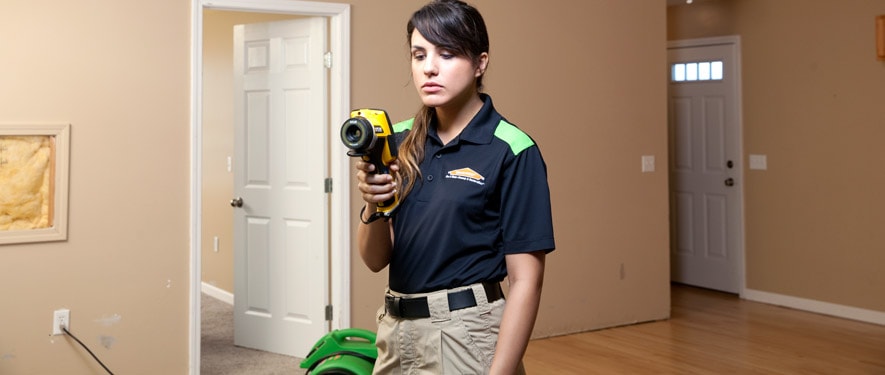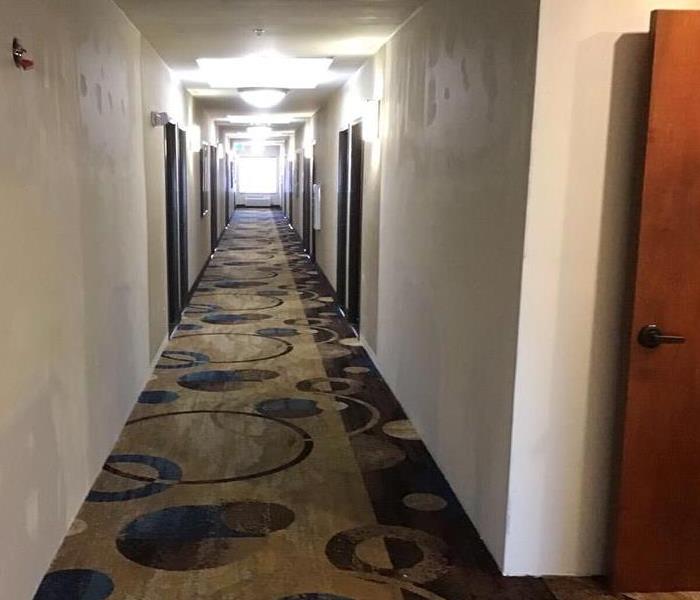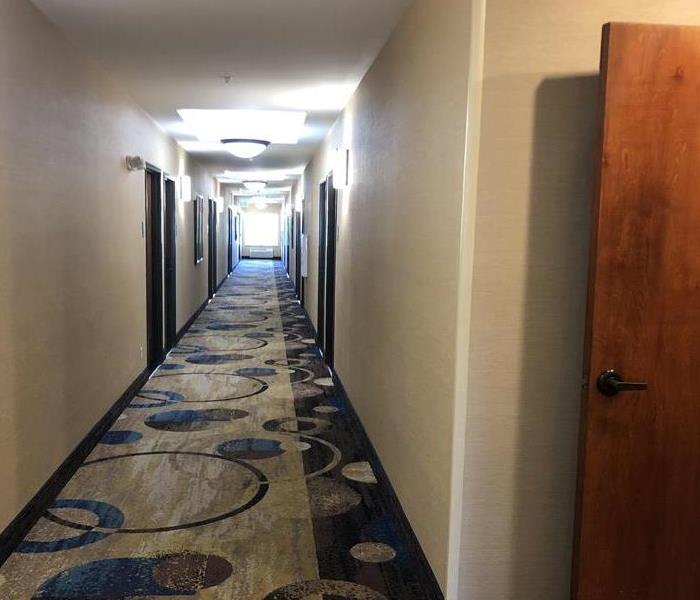
Step 2: Inspection and Water Damage Assessment
Our Water Damage Restoration Process
When responding to a water damage emergency, our trained technicians begin with a detailed inspection of your home or property, including a damage assessment. This includes using a moisture meter to test the wetness of materials such as sheetrock, tile, or subfloor that may have been affected by water damage. At this stage, our professionals are trying to determine the scope of the damage so that we can develop an appropriate plan of action. As our technicians discover what is wet and what is affected they begin to set drying equipment including placing dehumidifiers to remove moisture from the air and materials and air movers, which are large industrial air movers that help circulate hot dry air. Setting up the drying equipment is an important first step in the water mitigation process.
Identify and Stop the Water Source
We will check for the source of moisture in your home or business. The source must be stopped before any restoration or drying of the building can be successful.
- Stop the Source
- Check for Contaminated Water
Identify the Type of Water
We will identify the category and classification of water damage to ensure our professionals restore your property based on industry guidelines. The level of contamination of the water will affect the specific restoration processes we use.
- Category 1: "Clean Water"
- Category 2: "Gray Water"
- Category 3: "Black Water"
Survey the Extent of the Water Damage and Inspect the Premises
We inspect and test to determine the extent of damage and how far the moisture has traveled to ensure proper and complete restoration. In addition, we will inspect for safety concerns that may be evident. If there are any safety issues like lead or asbestos, please bring them to our attention.
- Survey Damage
- Complete Safety Inspection
Move or Block Furniture
We move furniture and property contents and block items to help prevent rust or furniture stains on wet carpet.
- Block Furniture

 24/7 Emergency Service
24/7 Emergency Service




